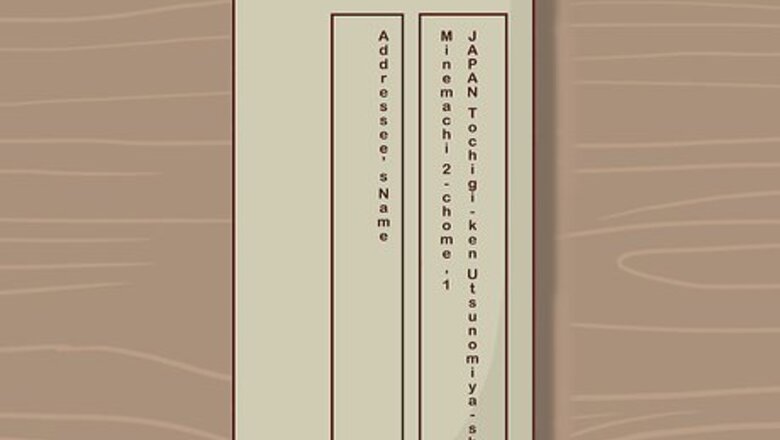
views
Using Vertical Envelopes
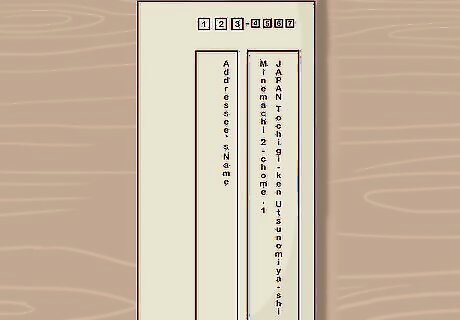
Address the letter to the recipient. The recipient’s address goes on the side of the envelope without a flap. Write the postal code in the boxes at the top. The mailing address should be written beneath the postal code boxes, top-to-bottom, right-to-left. After the address, write the recipient’s name. Organize address information from largest to smallest. An out-of-country letter might be addressed: JAPAN, Tochigi-ken, Utsunomiya-shi, Minemachi, 2-chome, 1. The order of information is more important than its location on certain lines. Kanji (Japanese pictograms) can shorten some addresses to a single line, while others might take several. The postal codes used in Japanese addresses generally contain 7 digits (as in: 123 - 4567). Since few Japanese streets have names, a street name is rarely included.
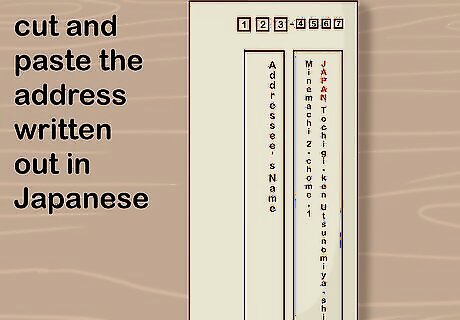
Double check the Japanese address. Whether it’s a handwritten message to a pen pal or Christmas pictures to your host family, you don’t want your envelope being sent to the wrong place. Perform an online search for the address to make sure you’ve written everything correctly. Be sure to write “Japan” very prominently with the recipient’s address information. To make it especially hard to miss, write it in caps! If you’re concerned you might have made a mistake, you might be able to cut and paste the address written out in Japanese from an online map search.
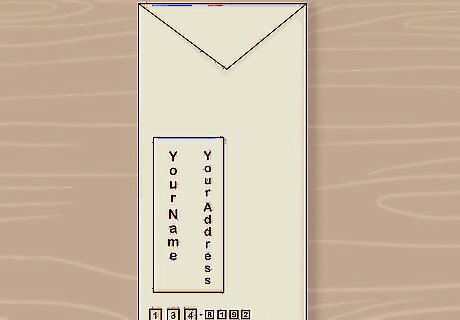
Include your return address. Turn your envelope over flap side up. Your postal code numbers go in the boxes at the bottom of the envelope. Write your address above the rightmost box in the same top-to-bottom, right-to-left pattern as before. Follow the address with your name. When sending a letter to Japan from a foreign country, make sure you clearly write your home country in English. This will increase the chances of the letter being returned should it be undeliverable. The format of your return address does not have to follow the Japanese style of large-to-small if you live outside of Japan.
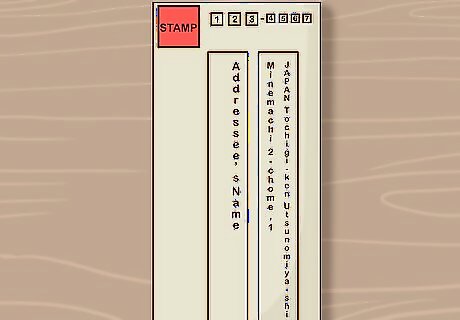
Add a stamp and send it off. But first, take a good look at the addresses. Does everything look right? For those of you writing from outside of Japan: is your home country clearly written? If so, turn it over to the side with the recipient’s address (the flapless side) and put a stamp in the upper left corner. You should only need postage from your home country to send an envelope to Japan, though this may differ from country to country. Ask at your local post office. Postage is weight-rated inside Japan. Expect a two-sheet letter in a normal envelope to cost about 90 yen or 110 yen airmail.
Using Horizontal Envelopes
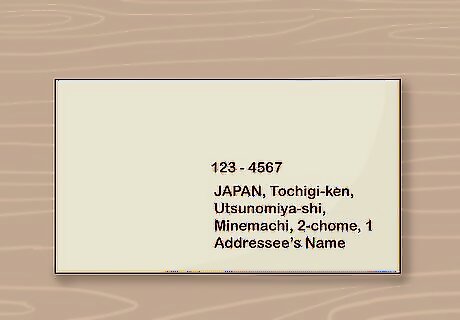
Write out the recipient’s address. Lay the envelope so its flapless side is facing up. Jot the postal code at about the center. Follow that with the recipient’s address, moving from the largest unit of information to the smallest (country, prefecture, city…). Follow this with the recipient’s name. Because horizontal envelopes carry a Western association, they are generally written according to Western convention: left-to-right, top-to-bottom. If you’re mailing this letter from outside of Japan, make sure you clearly write “Japan” at the top of the address.
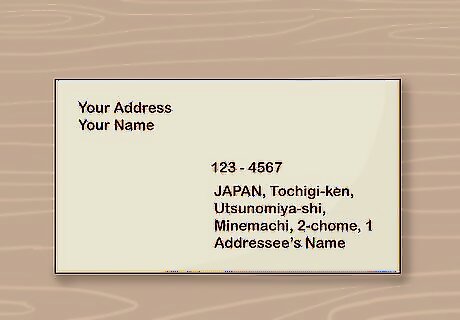
Fill in your return address information. Same as you would for a normal envelope, you’re going to fill in your return address into in the upper left corner of the flapless side. If you’re sending the letter from outside of Japan, clearly indicate your home country in English at the top of your address. It’s a matter of preference, but some people write the address on the flapless side and the return address on the flap side, similar to how one would for a vertical envelope.
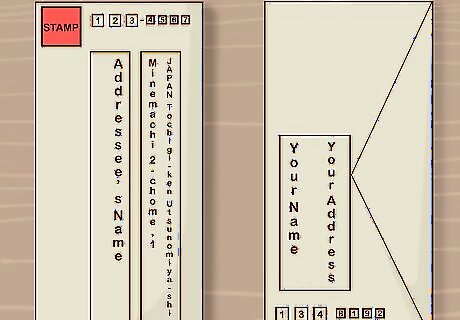
Flip the envelope to make a horizontal envelope vertical, alternatively. Turn a horizontal envelope on its side to make it into a vertical one. Treat this side-flap envelope exactly as you would a normal vertical envelope: recipient address goes on the flapless side, the return address on the flap side.
Improving Your Japanese Letter Writing
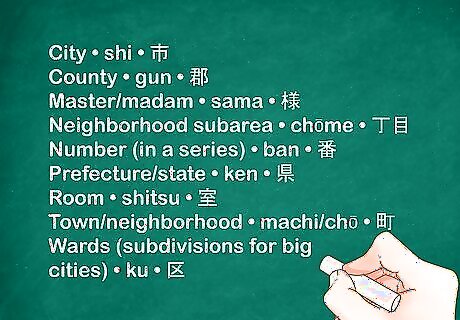
Familiarize yourself with common mailing suffixes. You’ll see some suffixes over and over again in addresses and letters. There are quite a few, so don’t feel like you need to know them all, but some of the most common include: City • shi • 市 County • gun • 郡 Master/madam • sama • 様 Neighborhood subarea • chōme • 丁目 Number (in a series) • ban • 番 Prefecture/state • ken • 県 Room • shitsu • 室 Town/neighborhood • machi/chō • 町 Wards (subdivisions for big cities) • ku • 区
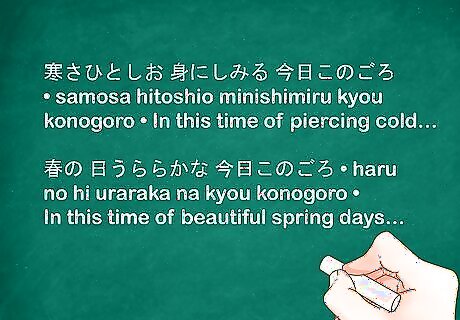
Make use of seasonal phrases and expressions. There are many seasonal phrases and expressions you can use to get a letter started out. These might be just the thing you need if you’re not sure how to begin a letter. Some common examples follow: 寒さひとしお 身にしみる 今日このごろ • samusa hitoshio minishimiru kyou konogoro • In this time of piercing cold… 春の 日うららかな 今日このごろ • haru no hi uraraka na kyou konogoro • In this time of beautiful spring days… 厳しい 残暑が 続いておりますが • kibishii zansho ga tsudzuite orimasu ga • The oppressive heat continues to linger…
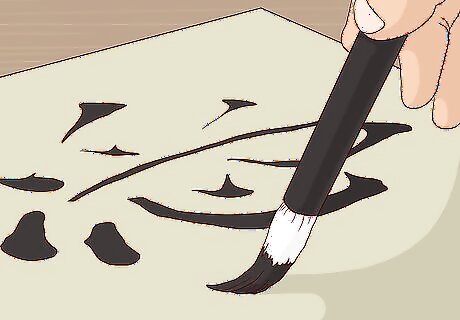
Follow Japanese polite writing practices. Your writing says a lot about you in Japanese culture, so you should take your time when writing messages by hand. Avoid pencil or marker and write in blue or black ink. White stationery is preferred, especially if you’re sending a letter to a superior. Avoid writing messages or names in red ink, as this can carry negative implications for many Japanese.

Learn to read Japanese. Where language is concerned, there are always going to be exceptions to the rules. The better you know Japanese, the more prepared you’ll be to overcome these challenges when they arise. Take a Japanese language or culture class offered by a local Japanese cultural organization. Many cross cultural events are sponsored by the Japanese consulate.




















Comments
0 comment